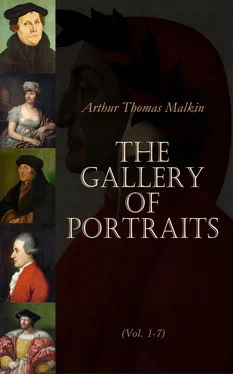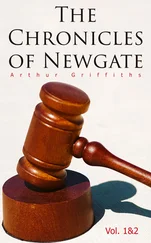But, while he was about to commence these buildings, he was appointed to take a leading part in another work, which ultimately became the principal occupation of the best years of his life, and enabled him to afford to his contemporaries and to posterity by far the most magnificent display of his architectural skill and genius. Ever since the Restoration, the repair of the Metropolitan Cathedral of St. Paul’s, which during the time of the Commonwealth had been surrendered to the most deplorable desecration and outrage, had been anxiously contemplated; and on the 18th of April, 1663, letters patent were at length issued by the King, appointing a number of Commissioners, among whom Wren was one, to superintend the undertaking. Under their direction a survey of the state of the building was taken, and some progress was made in the reparation of its most material injuries, when, after the sum of between three and four thousand pounds had been expended, the great fire, which broke out on the night of Sunday, the 2d of September, 1666, on the following day reduced the whole pile to a heap of ruins.
A considerable part of the year before this Wren had spent in Paris, having proceeded thither, it would seem, about Midsummer, 1665, and remained till the following spring. The object of his visit was to improve himself in the profession in which he had embarked, by the inspection and study of the various public buildings which adorned the French capital, where the celebrated Bernini was at this time employed on the Louvre, with a thousand workmen under him, occupied in all the various departments of the art, and forming altogether, in Wren’s opinion, probably the best school of architecture to be then found in Europe. He appears accordingly to have employed his time, with his characteristic activity, in examining everything deserving of attention in the city and its neighbourhood; and lost no opportunity either of making sketches of remarkable edifices himself, or of procuring them from others, so that, as he writes to one of his correspondents, he hoped to bring home with him almost all France on paper. The terrible visitation, which a few months after his return laid half the metropolis of his native country in ashes, opened to him a much wider field whereon to exercise the talent which he had been thus eager to cultivate and strengthen by enlarged knowledge, than he could, while so engaged, have expected ever to possess. He was not slow to seize the opportunity; and while the ashes of the city were yet alive, drew up a plan for its restoration, the leading features of which were a broad street running from Aldgate to Temple Bar, with a large square for the reception of the new cathedral of St. Paul; and a range of handsome quays along the river. The paramount necessity of speed in restoring the dwellings of a houseless multitude, prevented the adoption of this project; and the new streets were in general formed nearly on the line of the old ones. But they were widened and straightened, and the houses were built of brick instead of wood.
Soon after the fire, Wren was appointed Surveyor-General and principal Architect for rebuilding the parish churches; and on the 28th of March, 1669, a few days after the death of Sir John Denham, he was made Surveyor-General of the Royal Works, the office which he had for some time executed as deputy. On the 30th of July he was unanimously chosen Surveyor-General of the repairs of St. Paul’s (another office which Denham had also held) by the commissioners appointed to superintend that work, of whom he was himself one. At first it was still thought possible to repair the cathedral; and a part of it was actually fitted up as a temporary choir, and service performed in it. After some time, however, it became evident that the only way in which it could ever be restored was by rebuilding the whole from the foundation. Before the close of the year 1672 Wren had prepared and submitted to the King different plans for the new church; and his Majesty having fixed upon the one which he preferred, a commission for commencing the work was issued on the 12th of November, 1673. On the 20th of the same month, Wren, who had been re-appointed architect for the work, and also one of the commissioners, was knighted at Whitehall, having resigned his professorship at Oxford in the preceding April.
During the space of time which had elapsed since the fire, the Surveyor-General of Public Works had begun or finished various minor buildings connected with the restoration of the city, and also some in other parts of the kingdom. Among the former may be mentioned the fine column called the Monument; the church of St. Mary-le-Bow in Cheapside, the spire of which is considered the most beautiful he ever constructed, and a masterpiece of science, both begun in 1671, and finished in 1677; and the church of St. Stephens, Walbrook, begun 1672, and finished in 1679, the interior of which is one of the most exquisite specimens of architectural art which the world contains, and has excited, perhaps, more enthusiastic admiration than anything else that Wren has done. During the whole of this time, too, notwithstanding the little leisure which his professional avocations must have left him, he appears to have continued his philosophical pursuits, and his attendance on the Royal Society, of which, from the first, he had been one of the most active and valuable members. His communications, and the experiments which he suggested, embraced some of the profoundest parts of astronomy and the mathematics, as well as various points in anatomy and natural history, and the chemical and mechanical arts.
The design which Wren had prepared for the new Cathedral, and which had been approved by the King, being that of which a model is still preserved in an apartment over the Morning-Prayer Chapel, did not in some respects please the majority of his brother-commissioners, who insisted that, in order to give the building the true cathedral form, the aisles should be added at the sides as they now stand, although the architect is said to have felt so strongly the injury done by that alteration, that he actually shed tears in speaking of it. This difficulty, however, being at length settled, his Majesty, on the 14th May, 1675, issued his warrant for immediately commencing the work; and accordingly, after a few weeks more had been spent in throwing down the old walls and removing the rubbish, the first stone was laid by Sir Christopher, assisted by his master-mason, Mr. Thomas Strong, on the 21st of June. From this time the building proceeded steadily till its completion in 1710; in which year the highest stone of the lantern on the cupola was laid by Mr. Christopher Wren, the son of the architect, as representing his venerable father, now in the seventy-eighth year of his age.
The salary which Sir Christopher Wren received as architect of St. Paul’s was only £200 a year. Yet in the last years of his superintendence a moiety of this pittance was withheld from him by the Commissioners, under the authority of a clause which they had got inserted in an act of parliament entitling them to keep back the money till the work should be finished, by way of thereby ensuring the requisite expedition in the architect. Even after the building had been actually completed, they still continued, on the same pretence, to refuse payment of the arrears due, alleging that certain things yet remained to be done, which, after all, objections and difficulties interposed by themselves alone prevented from being performed. Like his great predecessor, Michael Angelo, Wren was too honest and zealous in the discharge of his duty not to have provoked the enmity of many persons who had their private ends to serve in the discharge of a great public duty. He was at last obliged to petition the Queen on the subject of the treatment to which he was subjected; but it was not till after a struggle of some years that he succeeded in obtaining redress. The faction by whom he was thus opposed even attempted to blacken his character by a direct charge of peculation, or at least of connivance at that crime, in a pamphlet entitled ‘Frauds and Abuses at St. Paul’s,’ which appeared in 1712, and in reference to which Sir Christopher deemed it proper to appeal to the public in an anonymous reply published the year after, wherein he vindicated himself triumphantly from the aspersions which had been thrown upon him.
Читать дальше












